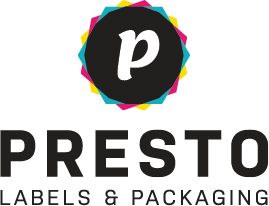Uploading Artwork
Before uploading artwork, you must first create an account and log in. You will then be able to upload your artwork before paying for your order.
We accept files in the following formats: pdf, ai, psd, eps, tiff, png, jpg, and indd. It is best to send your files in the native format created by the software and saved as a pdf. Please upload all images and fonts used in your artwork if they are not embedded in your art file.
Download 4×6 pouch illustrator artwork template
Download 7×12 pouch illustrator artwork template
Download 3x4_5 Fin Seal PDF artwork template
Download 5_5x8_5_3 side seal w-hang hole PDF artwork template
FLEXIBLE PACKAGING ARTWORK GUIDELINES
Cut Off – Is the artwork including bleed (if applicable).
Final Trim – Is the finished bag size.
Place artwork on a separate layer and please include bleed (if applicable).
Avoid placing text in Seal and Zipper areas, also hang hole (if applicable).
Take into consideration any art above the tear notch.
Fonts – Outline or send all fonts used in the file. There are often multiple versions of common font names, and they are not exactly alike. Please outline all fonts or include them with your art. Replacing fonts can create slight variations in spacing and may have different special characters. If you outline the fonts we cannot make any changes to the type.
White Ink – Create a separate art layer for white ink. If you are using clear or metallic material, you will need to print white ink in areas you would like to be opaque or not metallic. Please create a separate layer or file for white ink to be used for printing. This will help save considerable time and will show exactly where the white ink is to print and where it is not.
Images – Raster images must be 300 dpi or larger. Vector images are made up of scalable objects, whereas raster images are made up of pixels. A vector image is generated by an algorithm that permits the image to scale up or down with no loss of image quality. This is the preferred format for text and line art (Adobe Illustrator®). A rasterized image is a pixel-based image in which the resolution is predetermined at the beginning of the build process. Photographic images are usually raster-based. Once the resolution is established for a raster image, adjustments to a higher resolution will degrade the image quality (Adobe Photoshop®). All raster images that have a lower resolution than 300 dpi (dots per inch) often look pixelated. Please make sure all images are at least 300 dpi. An image that is 72 dpi may look fine on your screen but will not print well.
Color – Make artwork CMYK color values. Digital printing uses 4-color process inks (cyan, magenta, yellow and black) to create full color graphics. Digital printing can only create close matches to PMS and spot colors. Although we cannot guarantee custom color matches for all colors, we can closely match a wide range of hues. You will need to provide either a solid coated Pantone® color, or a printed sample of a color, for us to match. Please specify color matching when placing your order and call it out when signing off on your proofs. If color matching is not specified, your files will be printed as they were built. Color matching can delay the printing process depending on how art files are constructed. Please note, unless your screen and printer are calibrated they are not a good representation of the art when printed.
Format – Send all files as a PDF to avoid problems when converting. Please note the software that generated the art and send both the original and a PDF format of the art. This gives us the best opportunity to assist you with your project if changes need to be made. The PDF format will convert your art file to the format used for printing. Please review the PDF file once converted to make sure all effects look the way you what them printed.
